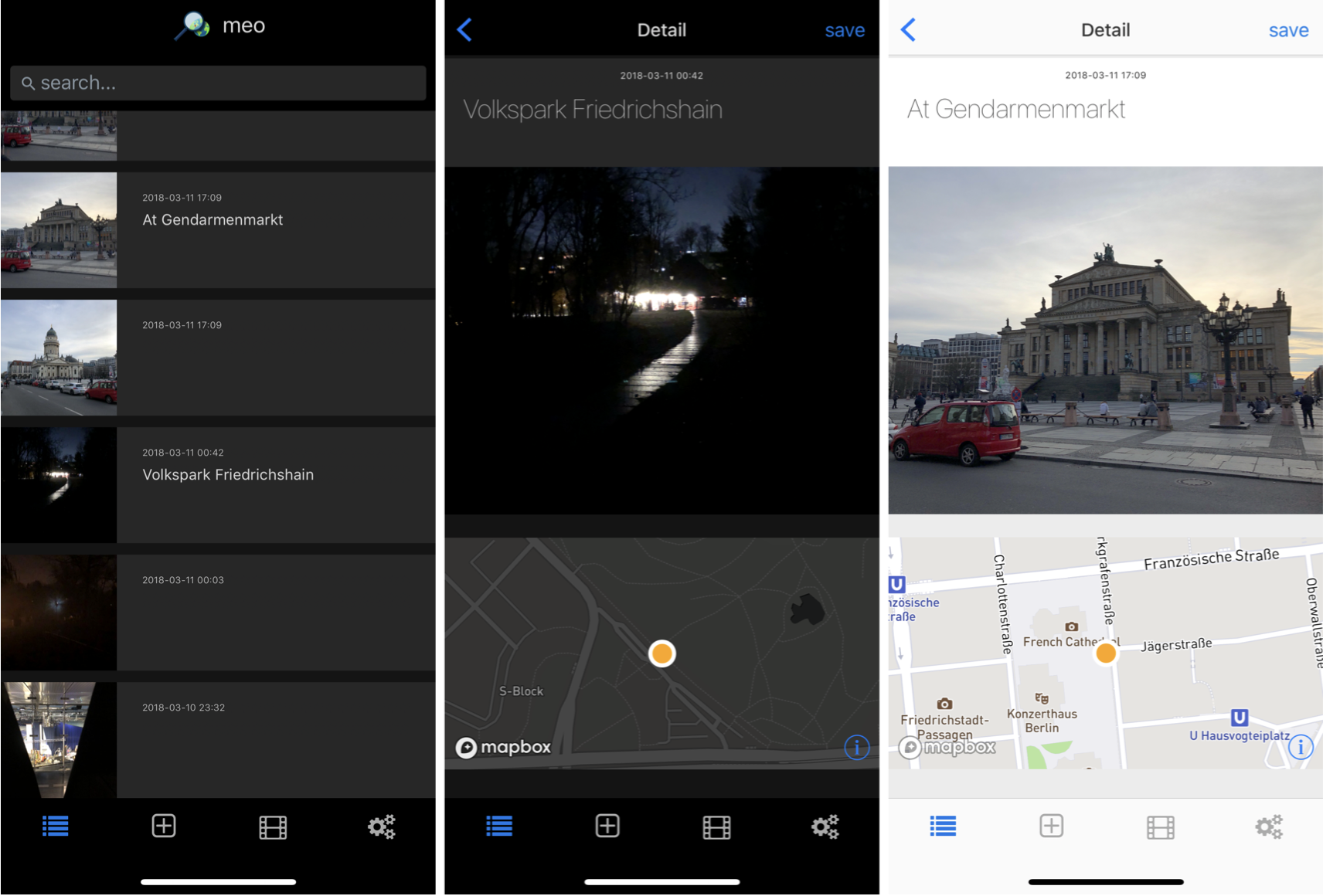meins
The open-source application meins is an experimentation toolkit for designing your life. It helps you collect relevant information, design, and then implement change. Most importantly, it does so without leaking data, because everything stays within your realm of control, and you can always verify this claim in the source code. Please have a look at the manual to find out more about what it does. The same text is available in the application under the help menu.
Here's how that currently looks like:
Installers
You can download a beta version of the application for Linux, Mac, and Windows on GitHub, where you want the highest existing version for your platform. The Mac version is usually the newest, and the others can lag. You only have to download the binary once, as there are automatic updates. You can also build the application yourself, with a simple make command, plus an unknowable amount of time for getting your development environment right.
All of these provide auto-update functionality, which can be accessed through "Check for Updates" in the application menu. In addition, checks for a newer version run once every 24 hours.
Motivation
See this blog post for the background. Back then it was called meo, but has since been renamed to meins.
Components
meins consists of a Clojure and ClojureScript system spanning an Electron application and a backend that runs on the JVM. There's also a mobile companion app written in ClojureScript on top of React Native, see ./rn-app in this repository.
All subsystems in meins make use of the systems-toolbox for their architecture.
Here's how the app currently looks like:
Installation
There is a Makefile that contains all the build targets. You will obviously need GNU make to run the targets. Alternatively, you can run the commands in there individually. Please have a look at the Makefile to see what the commands are.
You also need JDK 10+, for example OpenJDK 11. Please make sure that the $JAVA_HOME is set up and that you can run link from the command line.
Then you need Node.js. I use nvm. After installing it, run
$ nvm install 8
To install the required global npm dependencies on a Mac, you can run
$ make deps-mac
For Ubuntu, run
$ make deps-ubuntu
If anything is missing or redundant, please submit a pull request, I am not running these often. Leiningen itself is missing, not sure how to best install that from here. Maybe it's best to just use the commands in the install targets as a template for what you need to install. Please have a look at what the target for your platform does before blindly running it.
Once all the dependencies installed already, you can create a packaged version of meins running
$ make package
This will download dependencies, both Clojure and npm, and then run tests, build, and package the entire application for the platform you are running on. This will take The backend of the application is a standalone uberjar that runs with a packaged custom Java runtime that is generated when building meins using jlink. The resulting runtime is only a fraction of the size of a JDK. Packaging the runtime is more reliable than trying to rely on a recent JRE on a non-developer machine. This packaging mechanism is provided by Project Jigsaw,
Icons
Convert using electron-icon-generator, then copy to build/ and rename.
$ npm install -g electron-icon-generator
$ electron-icon-generator ~/Downloads/Logo_meins_RZ.png
Development
For development, you need to install the JavaScript dependencies:
$ yarn install
Then, you need to build the JavaScript for both the Electron Main and Render processes:
$ shadow-cljs watch main
$ shadow-cljs watch renderer
The task above need to be running in separate terminals, as they watching the file system for changes. Next, you need to compile the SCSS files into CSS:
$ lein sass4clj auto
Once you have completed all the steps in the previous section, all you need to do is the following, once again in separate terminals:
$ lein run
$ npm start
Now you should have an environment running where any change in the code (including the SCSS) reloads the content of the Electron application.
Packaging
meins is released as follows:
$ make release
This will package and sign the application, for the platform it runs on. Then, it will upload the resulting package(s) to the releases section on the project page. Note that the proper GH_TOKEN environment variable must be set for this.
Tests
$ lein test
or
$ lein test2junit
How to help
Contributions and pull requests are very welcome. Please check the open issues for where help is required the most, and file issues for anything else that you find.
License
Copyright © 2016-2019 Matthias Nehlsen. Distributed under the GNU AFFERO PUBLIC LICENSE, Version 3. See separate LICENSE file.

